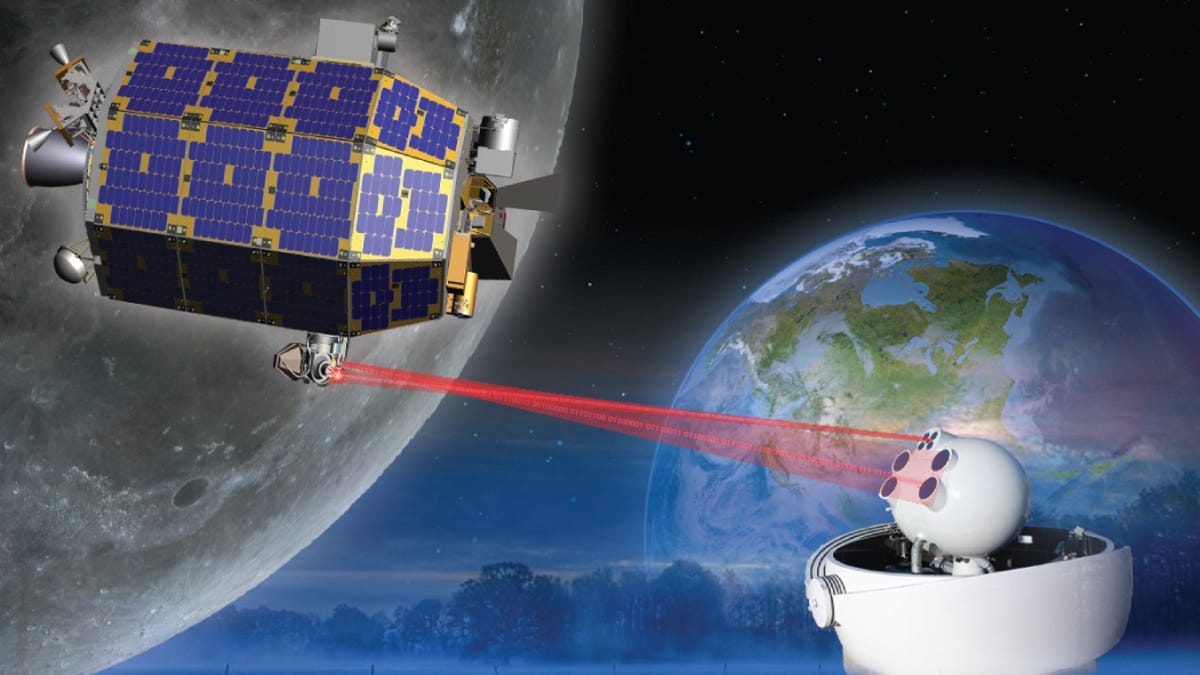Lunar explorer sets upload record, may pave way for 3D video from space
An experiment aboard the LADEE lunar probe also clocked a download rate of 622Mbps as NASA pursues next-generation space communications.

When you Skype future lunar colonists, chances are you'll have a great connection.
NASA has set a new record for data transmission to and from a spacecraft orbiting the moon, beaming info 239,000 miles at a download rate of 622 megabits per second (Mbps). How does that compare to your lousy Internet connection?
The data was sent to the Laser Communication Demonstration (LLCD) experiment aboard the Lunar Atmosphere and Dust Environment Explorer (LADEE) using a pulsed laser instead of traditional radio waves.
The experiment also showed an error-free upload rate of 20Mbps from a ground station in New Mexico to LADEE, which launched in September to explore the moon's extremely thin atmosphere.
"The goal of LLCD is to validate and build confidence in this technology so that future missions will consider using it," LLCD manager Don Cornwell said in a release. "This unique ability developed by the Massachusetts Institute of Technology's Lincoln Laboratory has incredible application possibilities."
The Lunar Laser Ground Terminal (LLGT) in White Sands, N.M., has an array of eight telescopes connected to a control room that houses optical transmitters and receivers.
NASA is hoping that lasers will allow for higher-capacity data communication, such as enhanced image resolution and 3D video from deep space.
"LLCD is the first step on our road map toward building the next generation of space communication capability," Badri Younes, NASA deputy associate administrator for space communications and navigation, said in a release.
"We are encouraged by the results of the demonstration to this point, and we are confident we are on the right path to introduce this new capability into operational service soon."
Learn more about the LLCD in the video below.

